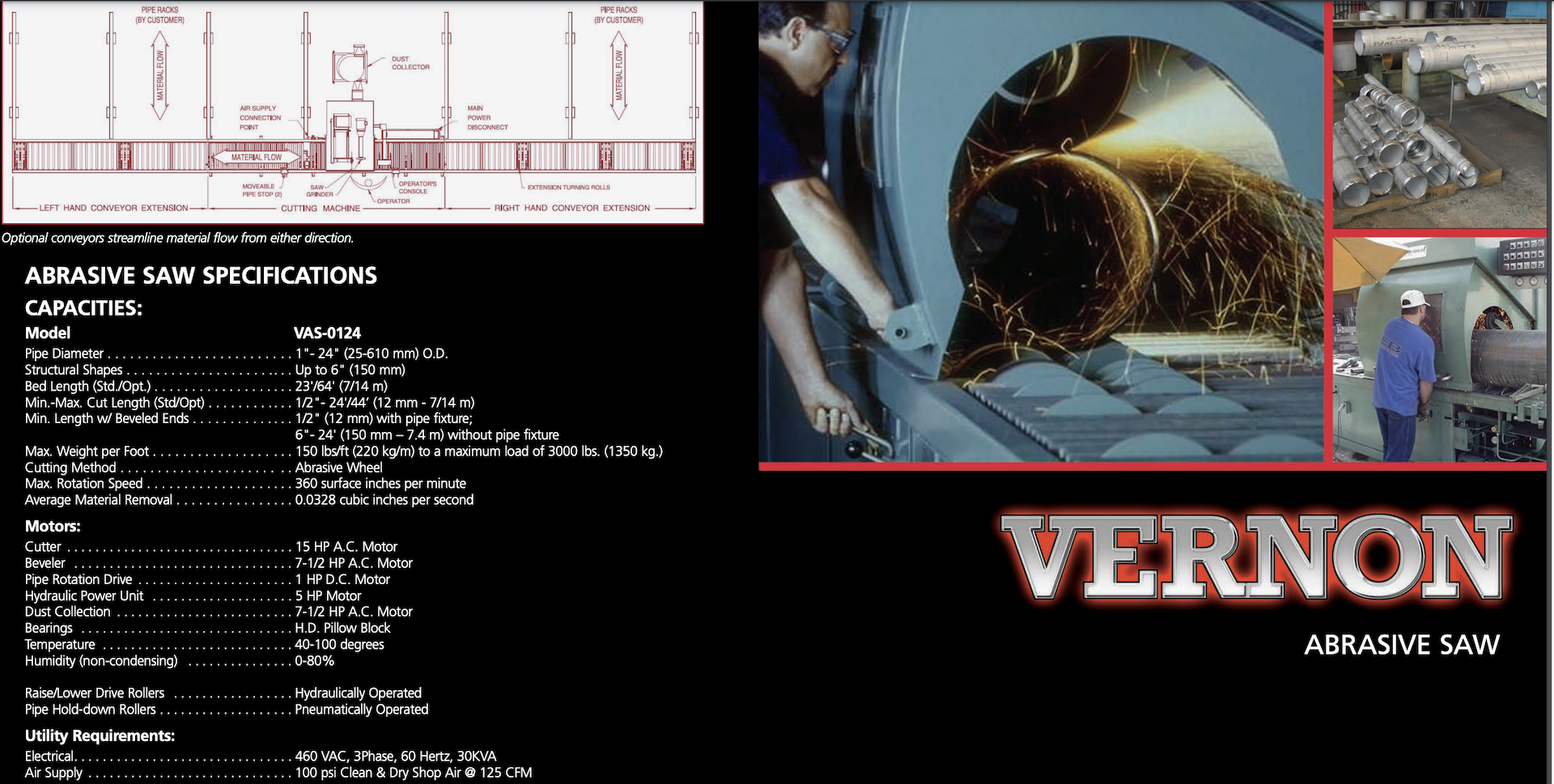What is Abrasive Pipe Saw & Beveling Machine?
An Abrasive Pipe Saw & Beveling Machine is a specialized tool designed to cut and bevel metal pipes quickly and precisely, typically for industrial applications such as pipeline construction, oil and gas, shipbuilding, and other heavy industries. These machines use abrasive wheels instead of traditional cutting tools to perform both cutting and beveling operations on pipes.
Here’s a technical breakdown of how it works:
1. Abrasive Cutting
- Abrasive Wheel: The machine uses a high-speed rotating abrasive wheel, usually made of aluminum oxide or silicon carbide. These materials are incredibly hard and designed to grind through tough materials like steel, stainless steel, or other alloys.
- Cutting Process: The abrasive wheel is brought into contact with the pipe, and the rotation generates friction, which, along with the hardness of the wheel, cuts through the pipe. The abrasive nature of the wheel ensures a clean, burr-free cut.
- Coolant/Lubrication: To reduce heat buildup and prolong the life of the abrasive wheel, coolant or lubricants are often used during cutting.
2. Beveling
- Bevel Angle: After the pipe is cut, the machine can automatically create a bevel on the cut edge. This is especially important for welding, as a beveled edge allows for a stronger weld joint by increasing the surface area of the weld.
- Beveling Tools: The beveling may be done by a secondary abrasive wheel, or some machines integrate the beveling process into the cutting operation by using a specialized abrasive disc with a pre-set angle (e.g., 30°, 45°).
- Precision: Many machines offer the ability to adjust the bevel angle and depth with high precision, ensuring consistent results across multiple pipes.
3. Pipe Clamping and Rotation
- Clamping Mechanism: These machines are equipped with an automatic or manual clamping system that securely holds the pipe in place during cutting and beveling. This ensures that the pipe does not move or shift during operation, which would affect precision.
- Rotation for Uniform Cutting: Some machines rotate the pipe while the abrasive wheel remains in a fixed position. This helps ensure that the cut and bevel are uniform around the circumference of the pipe.
4. Advantages of Using an Abrasive Pipe Saw & Beveling Machine
- Accuracy and Speed: Abrasive cutting is faster than many other cutting methods, especially on thicker pipes or harder metals. The machine ensures precise cutting and beveling with minimal operator intervention.
- No Heat-Affected Zone (HAZ): Unlike traditional oxy-fuel or plasma cutting, which can heat the material and change its properties, abrasive cutting produces minimal heat, reducing the heat-affected zone around the cut.
- Portability: Many models are designed to be portable and are used on-site in construction or pipeline projects, where the pipes need to be prepared for welding in the field.
5. Applications
- Pipeline Fabrication: Preparing pipes for welding in oil, gas, and water pipelines.
- Shipbuilding: Cutting and beveling pipes used in large ship systems for fuel, water, or gas transport.
- Manufacturing: Used in industries that require precision pipe cutting for structural or mechanical systems.
6. Safety Considerations
- Protective Shields: Since abrasive cutting produces sparks and debris, machines often come with safety shields and guards to protect the operator.
- Proper Ventilation: The abrasive cutting process produces dust and fine particles, so proper ventilation or dust extraction systems are necessary to maintain a safe working environment.
In summary, an Abrasive Pipe Saw & Beveling Machine offers an efficient and precise method for cutting and beveling pipes, especially in industrial settings that require heavy-duty cutting and welding preparation.


